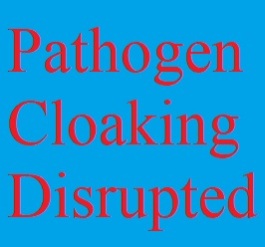 In the much-watched Star Trek program, the dastardly Klingons would cloak their ships so that they were invisible to the USS Enterprise. In the human body, pathogens also cloak themselves to be invisible, seem like sugar or a food, by using sialic acids. Sialic acids are common on the cells of vertebrates and are the highest concentration in the brain. The immune system will not attack pathogens with sialic acid attached because they appear as a natural part of the human system. Dr. P. R. Raghavan has found that Metadichol, by expressing the CD33 gene, allows binding of these acids so that the immune system can disrupt the pathogen.
In the much-watched Star Trek program, the dastardly Klingons would cloak their ships so that they were invisible to the USS Enterprise. In the human body, pathogens also cloak themselves to be invisible, seem like sugar or a food, by using sialic acids. Sialic acids are common on the cells of vertebrates and are the highest concentration in the brain. The immune system will not attack pathogens with sialic acid attached because they appear as a natural part of the human system. Dr. P. R. Raghavan has found that Metadichol, by expressing the CD33 gene, allows binding of these acids so that the immune system can disrupt the pathogen.
There have been many papers published on human healing by Dr. Raghavan that include increase in stem cells, reduction of diabetes, and general well being realized with the use of Metadichol. The finding of the binding of sialic acid with the expression of CD33 and the increase in stem cells explains the healing of wounds quickly when using Metadichol.
Below is a recently published paper by Dr. Raghavan on this topic. Metadichol acts to up regulate or down regulate CD33 depending on signaling mechanisms in human physiology.
Metadichol® and CD33 Expression in Umbilical Cord Cells
Abstract
CD33 also known as Siglec-3 is endogenously expressed in stem cells and is a marker for the myeloid lineage of cells. Increased expression of CD33 thus allows it to bind to any Sialic Acids (SIAs). These acids are binding sites for pathogens and toxins. By binding to these acids, CD33 can prevent invasion of hosts by these pathogens. Down-regulation of CD33, increase the release of the pro-inflammatory cytokine TNF-α by monocytes that increases reactive oxygen species that are involved in diseases like diabetes mellitus, Alzheimer’s, cardiovascular diseases asthma, and in various cancers.
The up-regulation of CD33 using Metadichol® was studied using Wharton’s Jelly Mesenchymal Stem Cells (MSCs) isolated from human umbilical cord and were grown in p-35 dishes until confluent and treatment was carried out with different concentrations. One dish was untreated and considered as control. The treated and untreated cells were analyzed using Flow Cytometry. The cells treated at 100 pg of Metadichol® has shown the highest increase (>400 fold) in CD33++ expression (48.77%) compared to untreated control (0.11%).
Link to paper: CD33-paper
This paper may be difficult to digest. However, that should not stop you from using Metadichol for whatever ails you. This is a link for the 29 articles with links to Dr. Raghavan’s papers that I have published on Metadichol. –Mark Pegram
